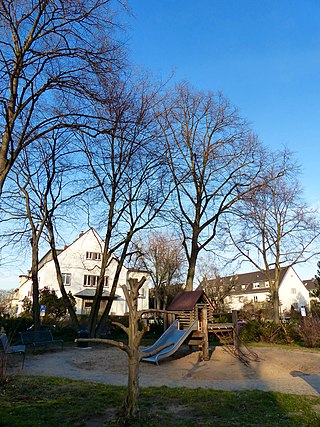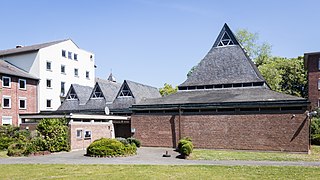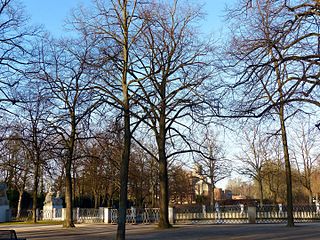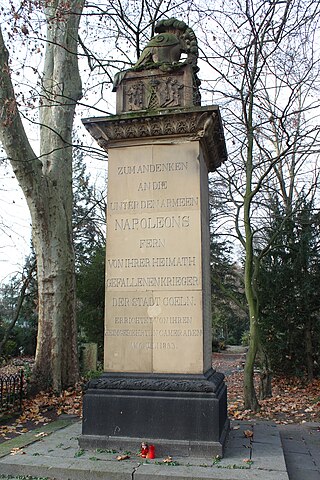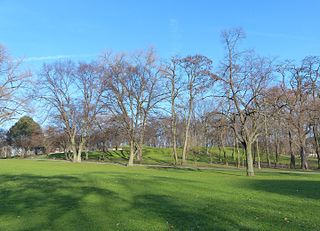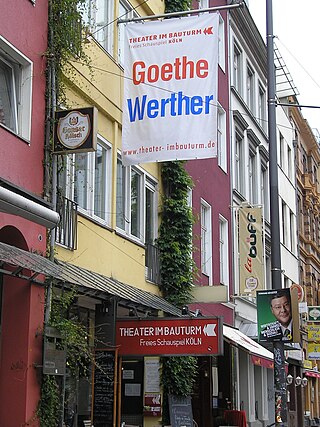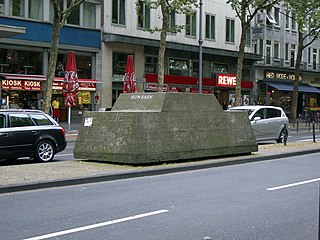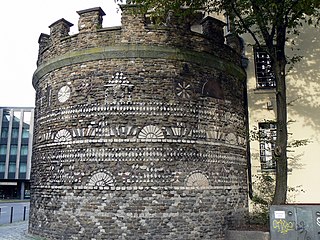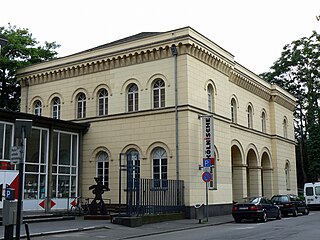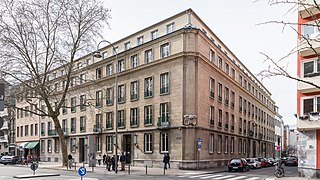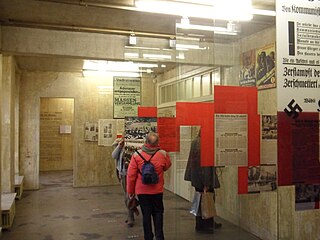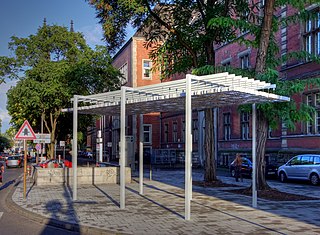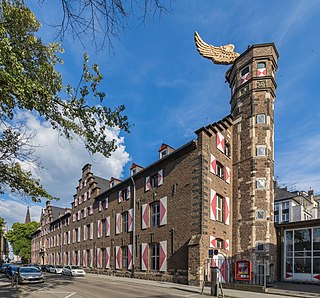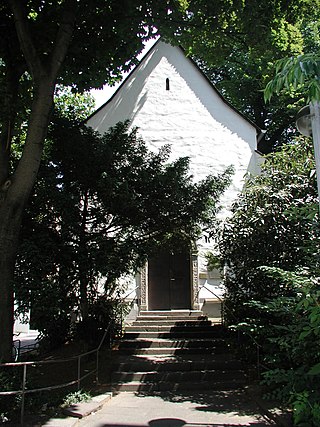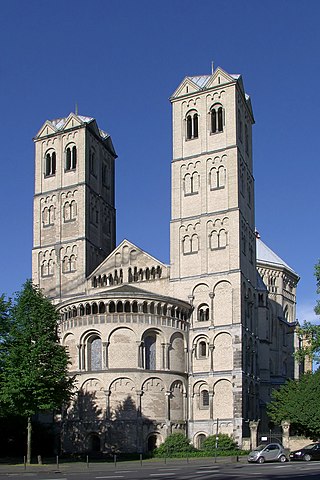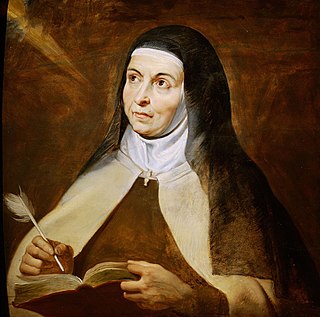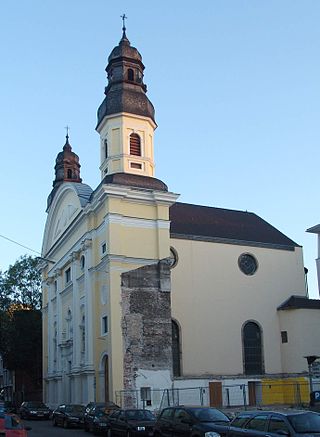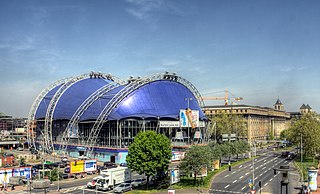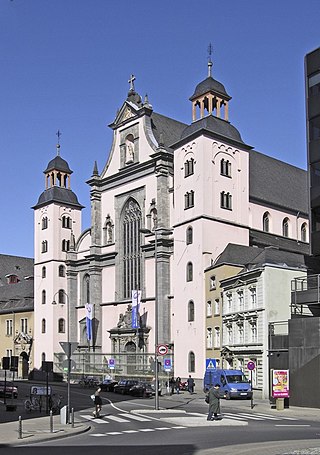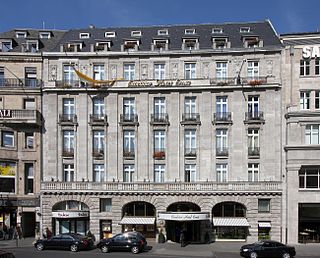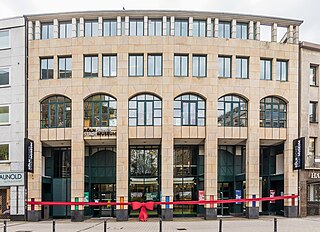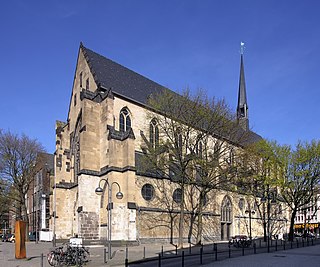Self-guided Sightseeing Tour #7 in Cologne, Germany
Legend
Guided Free Walking Tours
Book free guided walking tours in Cologne.
Guided Sightseeing Tours
Book guided sightseeing tours and activities in Cologne.
Tour Facts
12.2 km
102 m
Experience Cologne in Germany in a whole new way with our free self-guided sightseeing tour. This site not only offers you practical information and insider tips, but also a rich variety of activities and sights you shouldn't miss. Whether you love art and culture, want to explore historical sites or simply want to experience the vibrant atmosphere of a lively city - you'll find everything you need for your personal adventure here.
Activities in CologneIndividual Sights in CologneSight 1: Lortzingplatz
Lortzingplatz was laid out between 1906 and 1908 by the royal horticultural architect Fritz Encke in the Lindenthal district of Cologne. According to Encke's plans, the 2300 square metre garden square was to take on the function of a multifunctional recreational space in the residential district on Theresienstraße, which was built up to the beginning of the 20th century. The square was named after the composer Albert Lortzing, who married Rosina Regina Ahles in Cologne on January 30, 1824.
Sight 2: Mor Petrus u. Mor Paulus - Syrisch-Orthodoxe Kirche
St. Peter and Paul, originally the monastery church of the Good Shepherd is a Syriac Orthodox church in the Lindenthal district of Cologne, which was built between 1962 and 1964 according to plans by the architect Fritz Schaller and consecrated in December 1964. The church was originally designed as a monastery church for the religious community of the Sisters of the Good Shepherd.
Sight 3: Karl-Schwering-Platz
Karl-Schwering-Platz is a green space in Cologne's Lindenthal district, designed in 1925 by Fritz Encke, director of horticulture. The square is part of the green corridor of the Lindenthal Canal, which was created as a connection between the inner green belt at Aachener Weiher and the city forest in the outer green belt on the initiative of the then mayor of Cologne, Konrad Adenauer. The elongated square was named after the former director of the Apostelgymnasium, Karl Schwering (1846–1925).
Sight 4: Christi Auferstehung
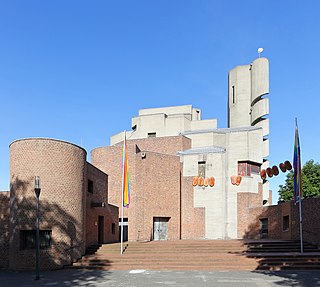
Christi Auferstehung (Resurrection of Christ) is a Catholic church in the Lindenthal district of Cologne, which was built between 1968 and 1970 according to plans by the architect Gottfried Böhm and consecrated in 1971. It is considered a typical example and conclusion of a series of very sculptural, sculptural buildings by the architect.
Sight 5: Napoleonstein
The Napoleon Stone at the Melaten Cemetery in Cologne is a war memorial for soldiers from Cologne who fought under Napoleon Bonaparte and died during the Napoleonic Wars. The monument was inaugurated in 1853, 39 years after the end of the French period in Cologne. It was donated by 65 surviving war participants and is therefore also a veterans' monument.
Sight 6: Matthäuskirche
The Matthäuskirche is a Protestant community centre with a church built between 1975 and 1977 in the Lindenthal district of Cologne. Today, it is one of three churches in the congregation of Lindenthal in the Cologne-Mitte church district of the Evangelical Church in the Rhineland, along with the Paul Gerhardt Church and the Dietrich Bonhoeffer Church. The church is named after the evangelist Matthew.
Sight 7: Hiroshima-Nagasaki-Park
Hiroshima-Nagasaki-Park was inaugurated on 7 August 2004 in part of the Inner Green Belt in the Neustadt-Süd district of Cologne.
Sight 8: Theater im Bauturm
The Theater im Bauturm – Freies Schauspiel Köln is an independent theatre that was founded in 1983 in the building of the architectural group Bauturm. It is located in the Belgian Quarter on Aachener Straße, behind the café in the Bauturm, diagonally opposite the Volksbühne.
Sight 9: Hahnentorburg
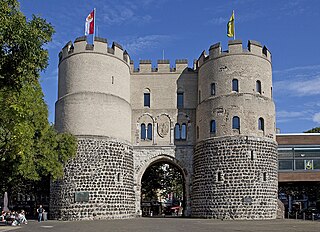
The Hahnentorburg is one of originally twelve gate castles in the eight-kilometre-long medieval city wall of Cologne (1180–1220) and secured the western access to the city on the road to Aachen and Jülich. It is located on today's Rudolfplatz.
Sight 10: ruhender Verkehr
Stationary Traffic is an action sculpture on Cologne's Hohenzollernring, created in 1969 by Wolf Vostell – it consists of a car completely encased in concrete, whose contours have been preserved in a roughly simplified form and ironically depicts "stationary traffic" on public roads.
Sight 11: Jawne
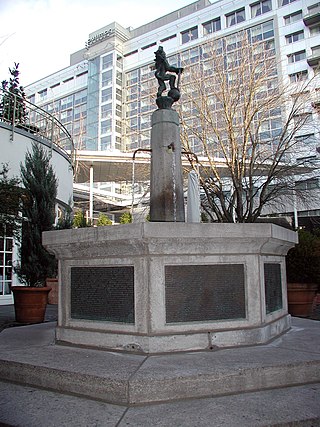
The Jawne was a Jewish Reformrealgymnasium in Cologne.
Sight 12: Roman Tower
The Roman Tower is a Roman watchtower decorated with mosaics of the Roman city wall in Cologne's Old Town North.
Sight 13: Alte Wache
The Old Guard at the Armoury is one of the few preserved or rebuilt classicist buildings from the beginning of the Prussian period in Cologne. It is located opposite the regional council in Zeughausstraße. It is connected to the old armoury by a connecting building; the entire building complex houses the Cologne City Museum, with the Alte Wache being used for temporary exhibitions.
Sight 14: Der Goldene Vogel
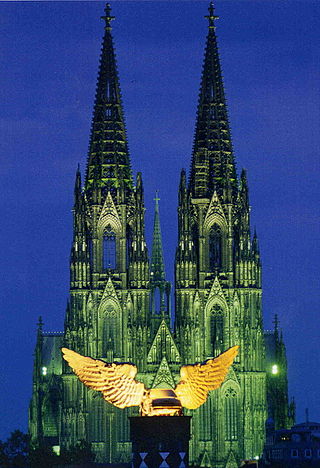
The Golden Bird is a winged, gilded car on the stair tower of the listed armoury in Cologne's old town. It is the relic of an art action by HA Schult and Elke Koska (realisation) from 1989, which was created as part of the Fetisch Auto action cycle. The Golden Bird has occupied its current and long controversial location as a "monument to the car era" since 25 April 1991.
Sight 15: EL-DE-Haus
EL-DE Haus, officially the NS Documentation Center of the City of Cologne, located in Cologne, is the former headquarters of the Gestapo and now a museum documenting the Third Reich.
Sight 16: NS-Dokumentationszentrum
The NS Documentation Centre of the City of Cologne(German: NS-Dokumentationszentrum der Stadt Köln) was founded by a resolution passed by the Cologne city council on December 13, 1979, and has become the largest regional memorial site in all of Germany for the victims of the Nazis. Since 1988, it has been housed in "EL-DE Haus," the EL-DE building, named for the initials of its owner, Catholic businessman Leopold Dahmen. This building was the headquarters of the Cologne Gestapo between December 1935 and March 1945. In the final months of the war, several hundred people, most of them foreign forced laborers, were murdered in the courtyard of the building. In a bit of historical irony, the EL-DE building remained largely untouched by the ravages of the war.
Wikipedia: NS Documentation Centre of the City of Cologne (EN), Website
Sight 17: Justizgebäude am Appellhofplatz
The court building at Appellhofplatz is a historic building in Cologne-Altstadt-Nord on Appellhofplatz. The building, which has been preserved in a modified form, has been a listed building since 22 December 1983.
Sight 18: St. Maria in der Kupfergasse
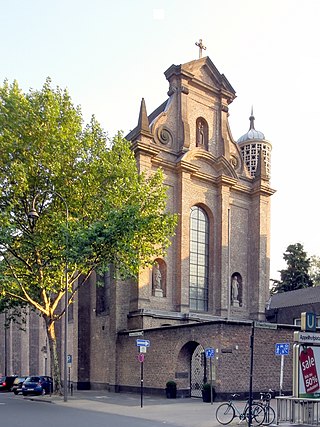
St. Maria in der Kupfergasse is a Baroque church in Cologne, western Germany, in the district of Innenstadt. The pilgrimage church is dedicated to St. Mary, the Black Madonna. It was completed in 1715 and measures 37.20 meters in length and 17.30 metres in width.
Sight 19: Memorial for Defectors and the Victims of Nazi Military Justice
The Deserters' Monument in Cologne-Altstadt-Nord on Appellhofplatz pays tribute to deserters and war opponents from the National Socialist era in the form of a pergola by Swiss designer Ruedi Baur. It was officially handed over to the public on the occasion of the 70th anniversary of the invasion of Poland by the German Wehrmacht on 1 September 2009.
Sight 20: Zeughaus
The Cologne Armoury is a building built between 1594 and 1606 as a municipal arsenal in the Altstadt-Nord district, which was part of the building complex of the Cologne City Museum from 1958 to 2021.
Sight 21: Hl. Konstantin u. Helena
The Church of St. Maria Ablass was a three-aisled basilica with a western quadrangle tower in the northern Cologne suburb of Niederich. It was first mentioned as St. Mary's Church in 927 and was the parish church of the St. Ursula convent until 1804. It was abandoned in 1808 as a result of secularization and the dissolution of the monastery, as it did not become a parish church again. The small Marian chapel, the Maria Ablass Chapel, which was formerly attached to it, commemorates them. Today it is used as the St. Constantine and Helena Church by the Russian Orthodox community of Cologne.
Sight 22: Mariensäule
The Cologne column of Mary is one of the oldest among the Rhenish columns of Mary. This memorial of the veneration of Mary from Udelfanger Sandstein was designed by Vincenz Statz in a neo -Gothic style and completed in 1858; Today the column is on the Gereonsdriesch, a small park in the Altstadt-Nord district in the immediate vicinity of the east choir of the Romanesque church of St. Gereon.
Sight 23: St. Gereon's Basilica
St. Gereon's Basilica is a German Roman Catholic church in Cologne, dedicated to Saint Gereon, and designated a minor basilica on 25 June 1920. The first mention of a church at the site, dedicated to St. Gereon, appears in 612. However, the building of the current choir gallery, apse, and transepts occurred later, beginning under Archbishop Arnold II von Wied in 1151 and ending in 1227. It is one of twelve great churches in Cologne that were built in the Romanesque style.
Sight 24: Kapelle St. Joseph
The Carmel of St. Joseph in Cologne, founded in the 1850s, was a daughter foundation of the Carmel of Mary of Peace in Schnurgasse, which was first established in Cologne in 1639 and abolished in 1802. However, the new convent only existed until 1875.
Sight 25: Hansaplatz
Hansaplatz is the name of a park on the southeastern side of the Hansaring in Cologne's Altstadt-Nord, which is bordered by a 113-metre-long remnant of the medieval city wall and the Gereonsmühle.
Sight 26: Klingelpützpark
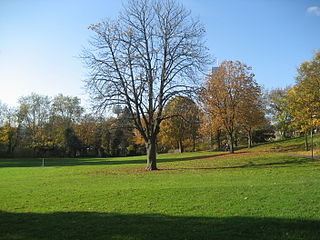
Klingelpützpark is an inner-city landscape park of around 2 hectares in the northern old town of Cologne. It was built between 1969 and 1971 on the site of the demolished Klingelpütz prison and, due to its spacious layout, is an example of urban design typical of the time.
Sight 27: St. Ursula

The Basilica church of St. Ursula is located in Cologne, North Rhine-Westphalia, Germany. It is built upon the ancient ruins of a Roman cemetery, where the 11,000 virgins associated with the legend of Saint Ursula are said to have been buried. The church has an impressive reliquary created from the bones of the former occupants of the cemetery. It is one of the twelve Romanesque churches of Cologne and was designated a Minor Basilica on 25 June 1920. While the nave and main tower are Romanesque, the choir has been rebuilt in the Gothic style.
Sight 28: Tiefrot
Theater Tiefrot is a private theatre in Cologne, North Rhine-Westphalia, Germany. The artistic director is named Volker Lippman, an actor and director, as well as the Tiefrot's founder.
Sight 29: Ursulinenkirche St. Corpus Christi
The Ursuline Church of St. Corpus Christi (Corpus Christi Church) in Cologne is the baroque former monastery church of the Ursuline order and the school church of the neighboring Ursuline school.
Sight 30: St. Kunibert

The Basilica of St. Cunibert also St. Kunibert is the last of Cologne's twelve Romanesque churches to be built. It was consecrated in 1247, one year before work on the Gothic Cologne Cathedral began. It was declared a minor basilica in 1998 by the then Pope John Paul II.
Sight 31: Musical Dome
The Musical Dome is a 1,640-seat theatre in Cologne, North Rhine-Westphalia, Germany. It opened in October 1996.
Sight 32: St. Mariä Himmelfahrt
The Catholic parish church of St. Mary's Assumption was for a long time the largest church in Cologne after the cathedral and is one of the few remaining architectural testimonies of the Baroque in the city. The former Jesuit college church, located on Marzellenstraße near the cathedral, was built according to plans by Christoph Wamser, who had already built the Jesuit church in Molsheim (Alsace). This church also served as a direct model for St. Mary's Assumption. Wamser is also documented as a construction manager until 1623. After that, Valentin Boltz from Thuringia took over the construction management and interior design.
Sight 33: Excelsior Hotel Ernst
The Excelsior Hotel Ernst is a historic hotel established in 1863 in Innenstadt, Cologne, Germany, adjacent to Cologne Cathedral.
Sight 34: St. Andrew's Church
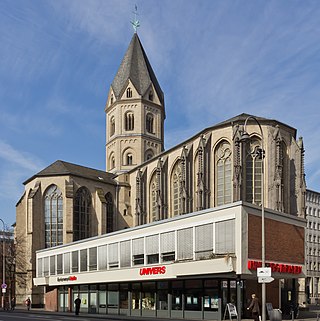
St. Andrew's is a 10th-century Romanesque church located in the old town of Cologne, Germany. It is one of twelve churches built in Cologne in that period. Archbishop Gero consecrated the church in 974, dedicating it to St. Andrew, although an earlier church at the site was dedicated to St. Matthew. In the 12th century, the church was rebuilt in the Romanesque style, and was probably completed after the great fire of Cologne in 1220. In the crypt of the church lies a Roman sarcophagus from the 3rd century, which holds the remains of the 13th-century theologian and natural philosopher St. Albertus Magnus. Since 1947, the Dominican Order has ministered to the church.
Sight 35: St. Maria ad Ortum
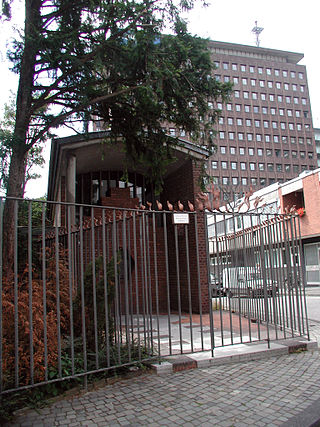
Maria ad Ortum was a three-aisled late Romanesque church of the Cistercian order "zo sent Marie garden", Mariengarten, in Cologne, which was abolished and laid down during the French period. It is still remembered today by a street name and a chapel bearing its old Latin name.
Sight 36: Kölnisches Stadtmuseum
The Kölnische Stadtmuseum is the municipal history museum of Cologne, North Rhine-Westphalia, Germany. It is housed in the former Franz Sauer fashion house since March 2024, which has been completely remodelled for the museum. The site is centrally located between the Minorite Church, Museum Kolumba and Breite Straße.
Sight 37: Kolumba Kunstmuseum
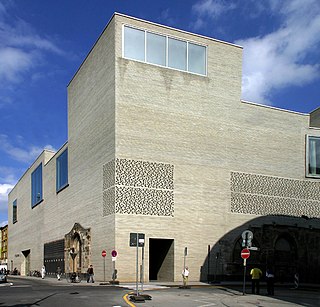
The Kolumba is an art museum in Cologne, Germany. It is located on the site of the former St. Kolumba church, and run by the Archdiocese of Cologne. It is one of the oldest museums in the city, alongside the Wallraf-Richartz Museum.
Sight 38: Minoritenkirche
The Minoritenkirche or Church of the Immaculate Conception is a Catholic church on the Kolpingplatz in Cologne. Built in the 13th century, it is now used by the Franciscan and the Kolpingwerk social association.
Share
How likely are you to recommend us?
Disclaimer Please be aware of your surroundings and do not enter private property. We are not liable for any damages that occur during the tours.
GPX-Download For navigation apps and GPS devices you can download the tour as a GPX file.
